1792
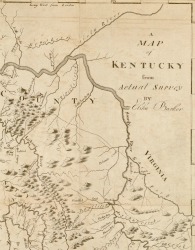
Kentucky became the 15th state admitted to the Union. The legislation giving the consent of Congress to the creation of a new state out of the jurisdiction of an existing state (required by Article IV, section 3 of the Constitution) had passed the Senate on January 12, 1791, the House of Representatives on January 28, 1791, and was signed by the president on February 4, 1791.
1792

John Brown, born in Staunton, Virginia, but later of Daneville, Kentucky, and John Edwards, born in Stafford County, Virginia, but later of Bourbon County, Kentucky, were elected as the state's first United States senators by a joint ballot of the general assembly. At the time of his election, Brown was serving as a representative from Virginia.
1792
John Brown and John Edwards took their seats in the Senate and the president pro tempore administered the oath of office.
1792

John Brown and John Edwards drew lots to determine their Senate class assignments. Brown drew the Class 2 seat (with a term to expire in 1793) while Edwards drew the Class 3 seat (with a term to expire in 1795).
1795

The Kentucky Gazette printed a petition to the state legislature from the inhabitants of Clark County, who denounced Senator Humphrey Marshall for his vote in favor of ratifying the Jay Treaty, and urged the legislature to instruct Marshall to oppose the treaty if it should come back before the Senate. Marshall responded by asserting that he had to vote according to his own judgment.
1796
The governor and state legislature of Kentucky requested that the Senate investigate allegations of perjury made against Humphrey Marshall by two state judges. A Senate committee concluded that because no official charges had been brought, Marshall was innocent until proven guilty, and took no action against him. Marshall completed his term and returned to Kentucky, where he later fought a duel with Kentucky senator Henry Clay of Lexington.
1801

John Breckinridge, born near Staunton, Virginia, but later of Lexington, Kentucky, entered the Senate. During his single term in office, Breckinridge served as the chief Senate spokesman for President Thomas Jefferson's administration. He was the grandfather of future senator and vice president John Cabell Breckinridge
1806
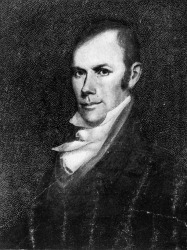
Henry Clay of Lexington took the oath as senator, despite not having reached the constitutional age of 30, and served until his term ended in 1807. Clay served in the Senate again from 1810 to 1811, from 1831 to 1842, and from 1849 until his death in 1852.
1811

The Senate elected John Pope as president pro tempore. Born in Prince William County, Virginia, but later of Springfield, Kentucky, Pope entered the Senate in March 1807 and served one term.
1817

John Jordan Crittenden of Russellville became chairman of the Senate Committee on the Judiciary, serving until 1818.
1824

Henry Clay ran unsuccessfully for president of the United States, losing to John Quincy Adams. At the time of his candidacy, Clay was Speaker of the House, but he returned to the Senate in 1831.
1829

John Rowan of Louisville became chairman of the Senate Committee on the Judiciary, serving until 1831.
1831
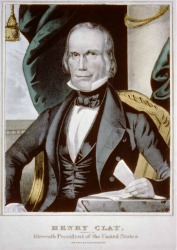
Henry Clay became the first U.S. senator to win the presidential nomination of a political party, the National Republicans, meeting in convention in Baltimore. Previously, candidates had been selected by congressional caucuses. Clay lost the election to the incumbent president, Andrew Jackson.
1832
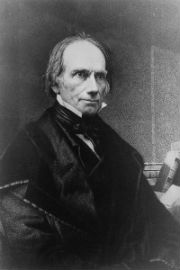
In the first speech of his Senate career, Henry Clay launched a major attack on the Jackson administration with a defense of an economic development plan known as the "American System." The plan, consisting of a national bank, protective tariffs, and federal subsidies for internal improvements, formed the legislative agenda of the new Whig Party.
1834
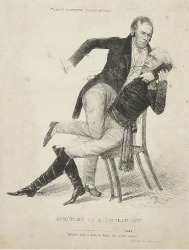
After a 10-week debate, the Senate voted 26 to 20 to censure President Andrew Jackson for withholding executive branch documents requested by the Senate. At the time of the censure, Henry Clay's anti-administration coalition in the Senate held an eight-vote majority over Jackson's fellow Democrats. In 1837 Jackson's supporters successfully had the censure expunged from the Senate Journal.
1834
Henry Clay became chairman of the Senate Committee on Foreign Relations, serving until 1836.
1837

When no vice presidential candidate won a majority in the Electoral College, the Senate elected former senator Richard Mentor Johnson of Great Crossings vice president of the United States, by a vote of 33 to 16; Johnson was inaugurated on March 4 and served one term.
1841
Henry Clay became chairman of the Senate Committee on Finance, serving during the first session of the 27th Congress.
1841

James Turner Morehead of Covington became chairman of the Senate Committee on Indian Affairs, serving until 1842.
1842
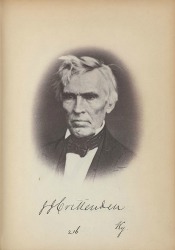
John J. Crittenden became chairman of the Senate Committee on Military Affairs (today's Committee on Armed Services), serving until 1845.
1844
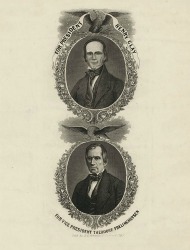
Henry Clay ran for president of the United States on the Whig Party ticket. His running mate was former senator Theodore Frelinghuysen of New Jersey. They lost to Democrats James K. Polk and former senator George M. Dallas.
1850
Senator Henry Clay delivered a long and impassioned speech on the Senate floor in favor of the Compromise of 1850, designed to settle the issue of slavery in the western territories taken as a result of the war with Mexico. Clay's omnibus bill ultimately failed, but the Senate eventually adopted its individual sections in separate votes.
1852
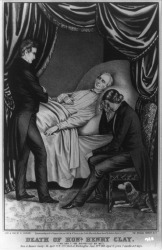
Following a memorial service in the Senate Chamber, Henry Clay, who died on June 29, 1852, became the first person to lie in state in the Capitol Rotunda.
1852
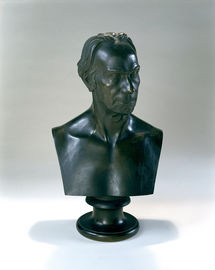
A bronze bust of Henry Clay was sculpted by Henry Kirke Brown. The bust, first owned by Isaac Bassett, assistant doorkeeper of the Senate, was purchased by the U.S. Senate Commission on Art in 1990.
1852

The seating of Archibald Dixon of Henderson was contested by California senator William McKendree Gwin. Gwin argued that the Senate had not been in session at the time Dixon's predecessor, David Meriwether, resigned and Dixon was elected, and that therefore there had not been a vacancy. On December 20, the Senate voted to seat Dixon.
1857

Representative (and future senator) John Cabell Breckinridge of Lexington was inaugurated vice president of the United States with President James Buchanan. The grandson of former senator John Breckinridge, he was just 36 years old—a year over the constitutional age requirement—making him the nation's youngest vice president.
1858
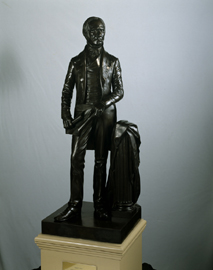
Thomas Ball sculpted a statuette of Senator Henry Clay. The statue was accepted by the U.S. Senate Commission on Art in 1987.
1859
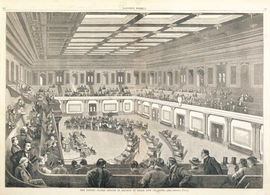
Vice President John C. Breckinridge delivered a speech bidding farewell to what is now known as the Old Senate Chamber. He then led the procession of senators down the hall to the new Senate Chamber in the recently expanded north wing of the U.S. Capitol.
1859
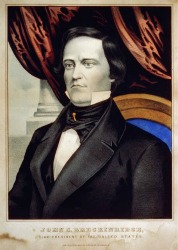
More than a year before the end of his term of office, Vice President John C. Breckinridge was elected to the Senate term beginning March 4, 1861.
1860
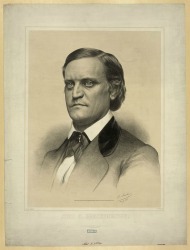
Vice President John C. Breckinridge was the southern Democratic candidate for president of the United States. (The northern Democrats nominated Illinois senator Stephen Douglas.) Breckinridge lost the election to Republican Abraham Lincoln. He took his seat in the U.S. Senate (to which he had been elected the previous December) on March 4, 1861.
1861
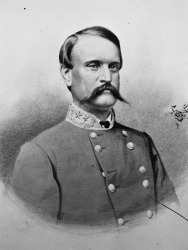
The Senate, by a vote of 36 to 0, expelled Senator John C. Breckinridge. Although Kentucky remained in the Union, Breckinridge had left the Senate in August, and in November, the former senator became a Confederate general. Three years later, Breckinridge led an unsuccessful assault on Washington, D.C.
1881
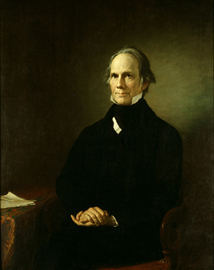
An oil portrait of Henry Clay by Henry F. Darby was purchased by the Joint Committee on the Library for installation on the second floor of the Senate wing. The portrait, painted around 1860, was purchased from Matthew Brady.
1893

Joseph C. S. Blackburn of Versailles became chairman of the Senate Committee on Rules (today's Committee on Rules and Administration), serving until 1895.
1906

Senator James Bennett McCreary of Richmond delivered George Washington's 1796 Farewell Address on the floor of the Senate, a tradition dating to 1862.
1906

Senator Joseph Blackburn became chairman of the Democratic Conference, assuming the role of his party's floor leader (before the positions of majority and minority leaders had been established), and served until 1907.
1929
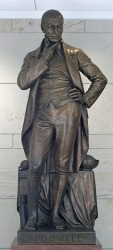
Statues of Henry Clay and Dr. Ephraim McDowell, a pioneering surgeon, sculpted by Charles H. Niehaus, were unveiled at the Capitol as Kentucky's contributions to the National Statuary Hall Collection.
1937
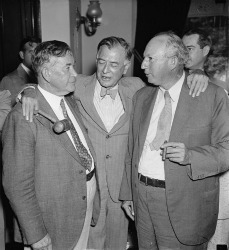
With the implicit support of President Franklin D. Roosevelt, Alben William Barkley of Paducah was chosen as Senate Democratic leader by a single vote in the Democratic caucus. Barkley served as majority leader until 1947, and then as minority leader from 1947 to 1949.
1944
Senator Alben Barkley resigned as majority leader in a dispute over President Roosevelt's veto of a tax bill, but was unanimously reelected by the Senate Democratic Conference. Congress overrode the presidential veto.
1945

Senator Albert B. "Happy" Chandler of Versailles resigned from the Senate to become Commissioner of Baseball. Chandler explained his decision that the baseball commissioner drew a salary five times that of a U.S. senator. It was during his tenure that major league baseball began racial integration.
1946
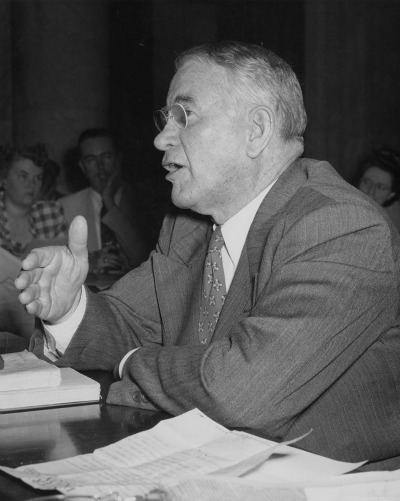
The findings of the Joint Committee on the Investigation of the Pearl Harbor Attack, chaired by Senator Alben Barkley were released, absolving President Roosevelt and his advisors and blaming the commanders in Hawaii for insufficient defensive provisions.
1947
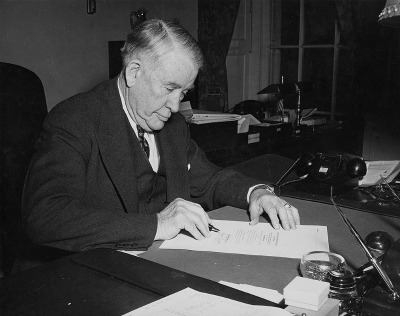
Senator Alben Barkley was reelected Democratic floor leader and also became the first chairman of the newly created Democratic Policy Committee.
1949
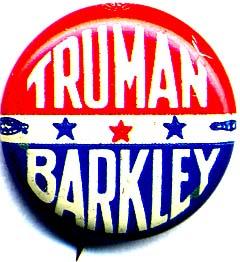
Alben Barkley was inaugurated vice president of the United States with President Harry S. Truman, serving until 1953. Barkley would be the last vice president to spend the largest share of his time presiding over Senate debates.
1952

Vice President Alben Barkley withdrew as a candidate for the Democratic nomination for president after meeting with leaders of organized labor who felt he was too old at 74 to be a successful candidate. Missouri senator Thomas Hennings placed Barkley's name in nomination nevertheless as a tribute to his long years of service.
1953

Senator Earl C. Clements of Morganfield was elected Democratic whip, serving until 1957. He served as acting majority leader from 1955 to 1956, during the absence of Democratic Leader Lyndon B. Johnson, who was recuperating after a heart attack.
1953

Senator John Sherman Cooper of Somerset delivered George Washington's Farewell Address on the floor of the Senate, a tradition dating to 1862.
1956
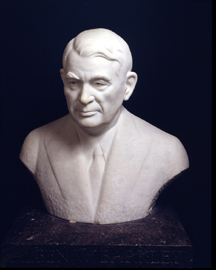
Senator and former vice president Alben Barkley died on stage at Washington and Lee University after delivering an address. At the conclusion of his speech, Barkley noted that after 42 years in national politics he had become a freshman again: "I am glad to sit on the back row, for I would rather be a servant in the House of the Lord than to sit in the seats of the mighty."
1959
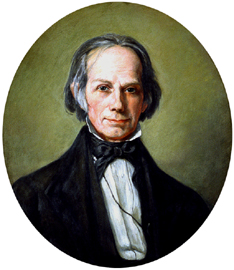
A portrait of Senator Henry Clay by Allyn Cox was unveiled in the Senate Reception Room (S-213). The work was one of five commissioned to commemorate former outstanding senators.
1968
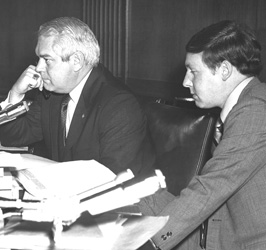
Future senator Mitch McConnell began two years working as a legislative assistant to Senator Marlow Webster Cook of Louisville.
1978

Senator Walter "Dee" Huddleston of Elizabethtown delivered George Washington's Farewell Address on the floor of the Senate, a tradition dating to 1862.
1987
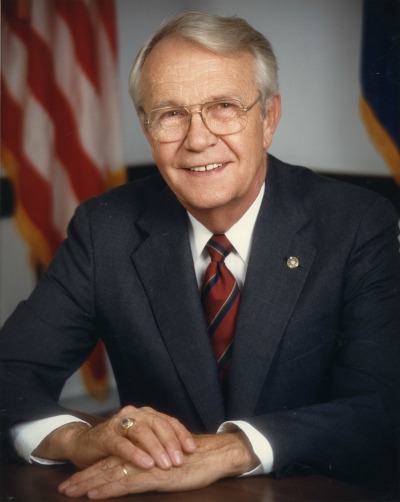
Wendell H. Ford became chairman of the Senate Committee on Rules and Administration, serving until 1993.
1989
As chairman of the Joint Congressional Committee on Inaugural Ceremonies, Senator Wendell Ford accompanied President-elect George H. W. Bush from the White House to the inaugural ceremonies at the Capitol.
1990

Senator Wendell H. Ford of Owensboro was elected Democratic whip, a position he held until 1999.
1999

Baseball Hall of Fame member James Paul David Bunning of Southgate took the oath as a senator.
1999

Mitch McConnell of Louisville became the third Kentuckian to chair the Senate Committee on Rules and Administration, a position he held until 2001.
2001
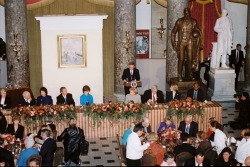
As chairman of the Joint Congressional Committee on Inaugural Ceremonies, Senator Mitch McConnell accompanied President-elect George W. Bush from the White House to the inaugural ceremonies at the Capitol.
2003
Senator Mitch McConnell became the Republican whip, serving until 2007, when he was elected Republican leader.
2009
Senator Mitch McConnell became Kentucky's longest-serving senator, surpassing Wendell Ford's record of 24 years, 6 days.
2009
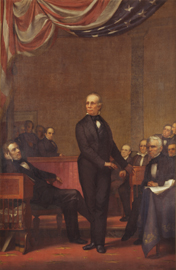
A newly restored painting of Henry Clay, titled "Henry Clay in the U.S. Senate, was installed in the east Brumidi stairway of the U.S. Capitol. Painted in 1866, the likeness of Clay lay in obscurity until its rediscovery in 2006.
2015
Senator Mitch McConnell became the Senate majority leader, serving in that position until January 2021, when he again became the minority leader.
2023
Senator Mitch McConnell became the Senate's longest-serving party leader, surpassing the 16-year record set by Mike Mansfield of Montana in 1977. He went on to serve until 2025, for a total 18 years.
2025
Mitch McConnell again became the chairman of the Senate Committee on Rules and Administration.
2025

Rand Paul of Bowling Green became chairman of the Senate Committee on Homeland Security and Governmental Affairs.